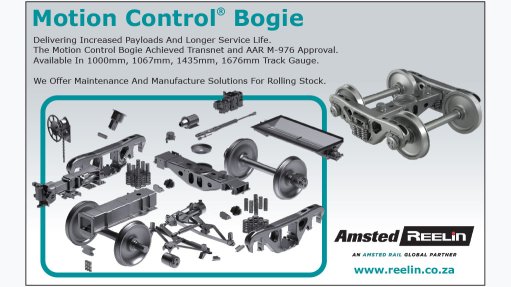R66bn worth of component exports at risk from move to EVs
Catalytic converters, engine parts, engines, clutches/shaft couplings, silencers/exhausts and ignitions/starting equipment are the component groupings most at risk from the global move to electric vehicles (EVs), as they are not required in these types of vehicles, says National Association of Automotive Component and Allied Manufacturers (Naacam) executive director Renai Moothilal.
Other components also at risk are transmission shafts/cranks and gearboxes, he adds.
These components are also not required in EVs, but their manufacturers’ existing capabilities offer them the opportunity to pivot and join the EV supply chain.
In 2021, automotive component exports from South Africa increased by 27% to a record R69.2-billion, up from R54.5-billion in 2020.
Catalytic converters, at R35-billion, comprised 50.4% of total automotive component exports, followed by engine parts, tyres and engines as the biggest categories.
In total, the value of South African component exports at risk amounts to R66-billion a year, says Moothilal.
In terms of job opportunities, about 17 500 jobs are at risk within the South African components sector, he notes. This excludes employment related to engines, as this is done in-house by two vehicle manufacturers.
The risk to component makers in terms of the EV evolution is divided into three categories.
High risk is where a company’s core business is to become obsolete; medium risk is where the core business will become obsolete, but there are opportunities to pivot within the operation; and low risk is where the company has a diversified product portfolio, with only one portfolio to become obsolete.
“However, it is important to note that the impacts of the phasing out of internal combustion engines (ICEs) are unlikely to be linear and immediate,” emphasises Moothilal.
The global phasing out of ICE vehicles in the short and medium term will not completely eliminate hybrid and plug-in hybrids, both of which require many similar components to ICEs, he notes.
“People often ask if South Africa is ready for NEVs – what does it mean for component manufacturers? Are we going to fall off a cliff?
“Actually not. Component manufacturers in South Africa have typically responded to technology changes every time there is a new model or a facelift is to be produced,” says Moothilal.
“We already have companies in South Africa exporting into global EV platforms, such as the F150 Lightning platform in the US. That should tell you that EV technology has already found its way into the South African component space.”
The exporter to the US is a locally owned foundry and forge business exporting wheel hubs.
Another manufacturer moving into the EV space is a producer of processed raw materials which has a large export contract with a vehicle manufacturer for the supply of components into their EV range.
A third example is a fuel cell and electrolyser component manufacturing facility that is currently being established to produce membrane electrode assemblies containing platinum-group metals.
Moothilal says a large cohort of Naacam members are multinational companies whose sister plants across the world are already producing components for new-energy vehicles (NEVs – hybrids and EVs included).
This means that they have NEV-specific research and development that can be readily shared with their local subsidiaries as and when required.
When Naacam members were asked in a recent survey what they believe to be the most important enabling factors to transition to component production for NEVs, they ranked technology incentives and capital incentives from government, as well as demand certainty from vehicle manufacturers as the two most important criteria.
Article Enquiry
Email Article
Save Article
Feedback
To advertise email advertising@creamermedia.co.za or click here
Announcements
What's On
Subscribe to improve your user experience...
Option 1 (equivalent of R125 a month):
Receive a weekly copy of Creamer Media's Engineering News & Mining Weekly magazine
(print copy for those in South Africa and e-magazine for those outside of South Africa)
Receive daily email newsletters
Access to full search results
Access archive of magazine back copies
Access to Projects in Progress
Access to ONE Research Report of your choice in PDF format
Option 2 (equivalent of R375 a month):
All benefits from Option 1
PLUS
Access to Creamer Media's Research Channel Africa for ALL Research Reports, in PDF format, on various industrial and mining sectors
including Electricity; Water; Energy Transition; Hydrogen; Roads, Rail and Ports; Coal; Gold; Platinum; Battery Metals; etc.
Already a subscriber?
Forgotten your password?
Receive weekly copy of Creamer Media's Engineering News & Mining Weekly magazine (print copy for those in South Africa and e-magazine for those outside of South Africa)
➕
Recieve daily email newsletters
➕
Access to full search results
➕
Access archive of magazine back copies
➕
Access to Projects in Progress
➕
Access to ONE Research Report of your choice in PDF format
RESEARCH CHANNEL AFRICA
R4500 (equivalent of R375 a month)
SUBSCRIBEAll benefits from Option 1
➕
Access to Creamer Media's Research Channel Africa for ALL Research Reports on various industrial and mining sectors, in PDF format, including on:
Electricity
➕
Water
➕
Energy Transition
➕
Hydrogen
➕
Roads, Rail and Ports
➕
Coal
➕
Gold
➕
Platinum
➕
Battery Metals
➕
etc.
Receive all benefits from Option 1 or Option 2 delivered to numerous people at your company
➕
Multiple User names and Passwords for simultaneous log-ins
➕
Intranet integration access to all in your organisation


















